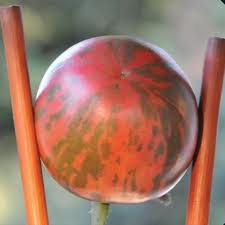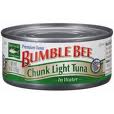A Seed Bank Grows in Wine Country
 Thursday, October 7, 2010 at 12:32PM
Thursday, October 7, 2010 at 12:32PM  The Seed Bank in Petaluma, CA sells 387 varieties of tomato seeds.In a grand old abandoned bank building that sits at a dusty intersection on the edge of Sonoma wine country in the tiny town of Petaluma, an heirloom seed store has sprouted. The Seed Bank--the only outpost of the Missouri-based Baker Creek Seed Company, currently the nation's premier heirlooom seed producer--is a goldmine for the growing army of gardeners and small farmers in Northern California and beyond fighting to preserve and cultivate plant diversity. The cavernous old Main Street bank filled with colorful heirloom seed packets is a perfect symbol of sustainablity.
The Seed Bank in Petaluma, CA sells 387 varieties of tomato seeds.In a grand old abandoned bank building that sits at a dusty intersection on the edge of Sonoma wine country in the tiny town of Petaluma, an heirloom seed store has sprouted. The Seed Bank--the only outpost of the Missouri-based Baker Creek Seed Company, currently the nation's premier heirlooom seed producer--is a goldmine for the growing army of gardeners and small farmers in Northern California and beyond fighting to preserve and cultivate plant diversity. The cavernous old Main Street bank filled with colorful heirloom seed packets is a perfect symbol of sustainablity.
 A Violet Jasper purple tomato grown from Baker Creek Seeds.The shelves of the Seed Bank hold 33 types of cucumber, 47 eggplants, and don't even get us started on the hundreds of tomatoes."Sub-arctic" tomatoes are on offer, so are watermelons that grow up to 40 pounds and are fiber-free. All of the seeds have been developed through traditional methods by dedicated seed-savers who use intricate cultivation techniques. Genetically Modified seeds are not allowed. This is not the homogenous super-market produce spit out by the yield-crazed American agricultural machine, this is agriculture as art. Mary Robinson's German Bicolor Tomato, Blue Curled Scotch kale, Pandora Striped Rose eggplant are things of beauty to behold.
A Violet Jasper purple tomato grown from Baker Creek Seeds.The shelves of the Seed Bank hold 33 types of cucumber, 47 eggplants, and don't even get us started on the hundreds of tomatoes."Sub-arctic" tomatoes are on offer, so are watermelons that grow up to 40 pounds and are fiber-free. All of the seeds have been developed through traditional methods by dedicated seed-savers who use intricate cultivation techniques. Genetically Modified seeds are not allowed. This is not the homogenous super-market produce spit out by the yield-crazed American agricultural machine, this is agriculture as art. Mary Robinson's German Bicolor Tomato, Blue Curled Scotch kale, Pandora Striped Rose eggplant are things of beauty to behold.
Word has spread fast about the store. Michael Pollen, writer-in-chief of the sustainable food movement, has already stopped by to give a talk. And the store's speaker series this Fall includes Paul Greenburg, author of Four Fish, the Future of the Last Wild Food, and Rowen Jacobsen, author of American Terroir: Savoring the Flavors of Our Woods, Waters and Fields. If you can't make it to Petaluma, there is a website, and by all means order a hardcopy of the Baker Creek Heirloom Seed Catalog. Just looking at photos of Crookneck-Early Golden Summer Squash, American Purple Top Rutabega or Chichiquelite Huckleberries will give you faith in the future of humankind.
 Kathy |
Kathy |  Post a Comment |
Post a Comment | 

